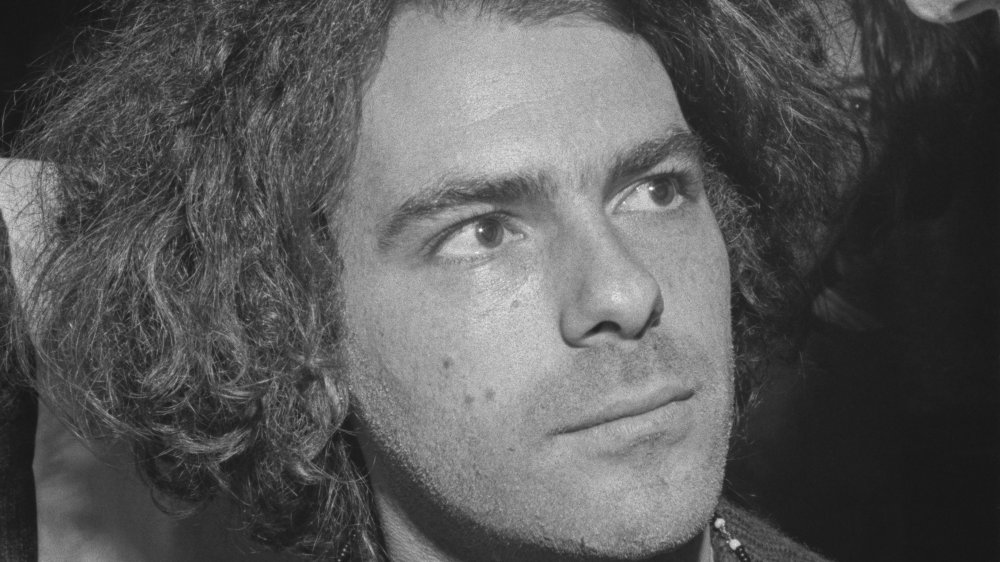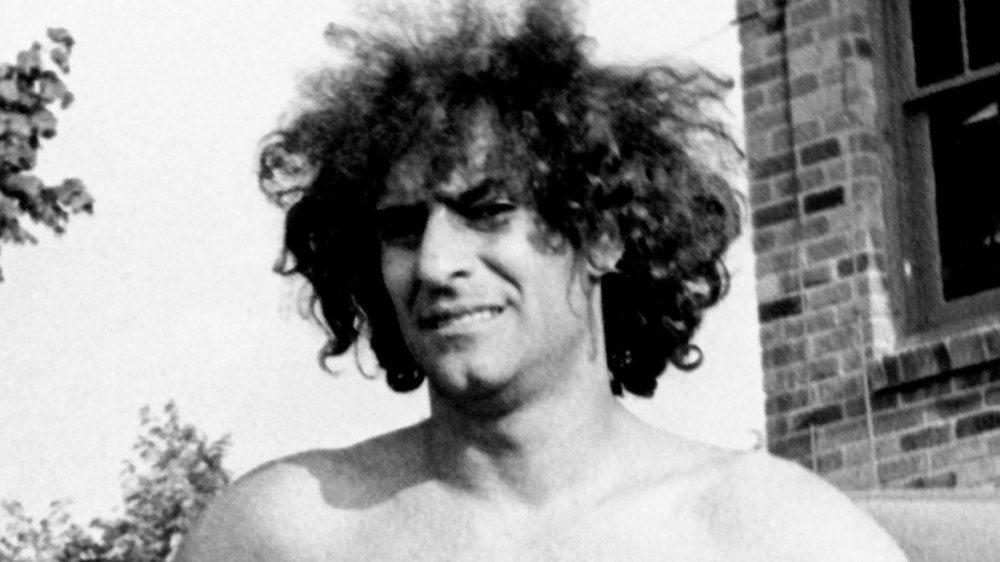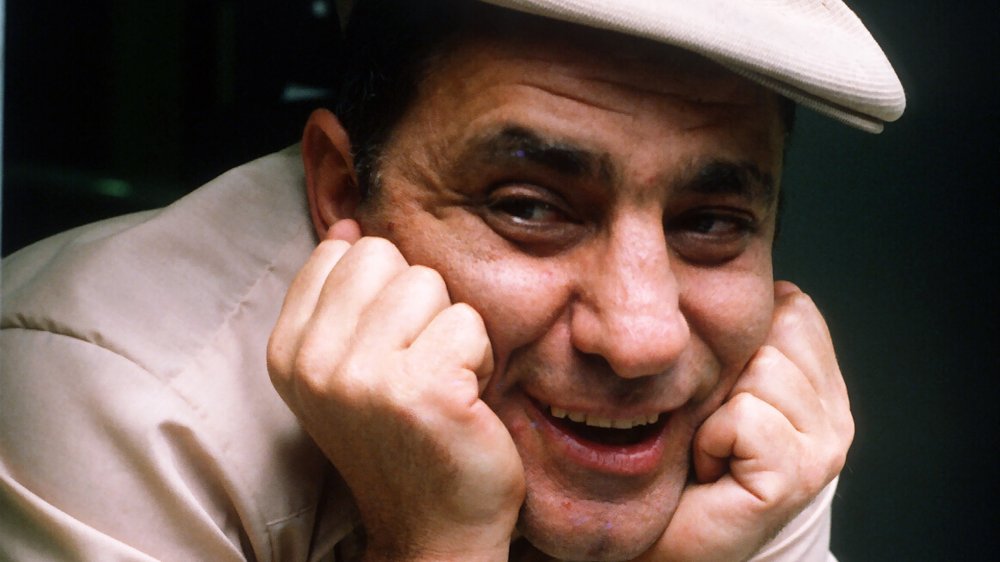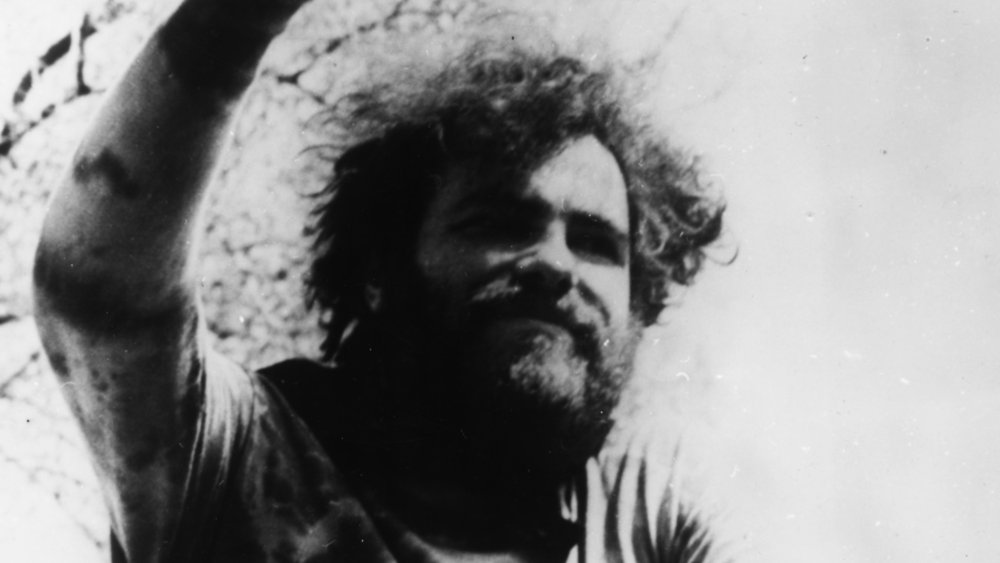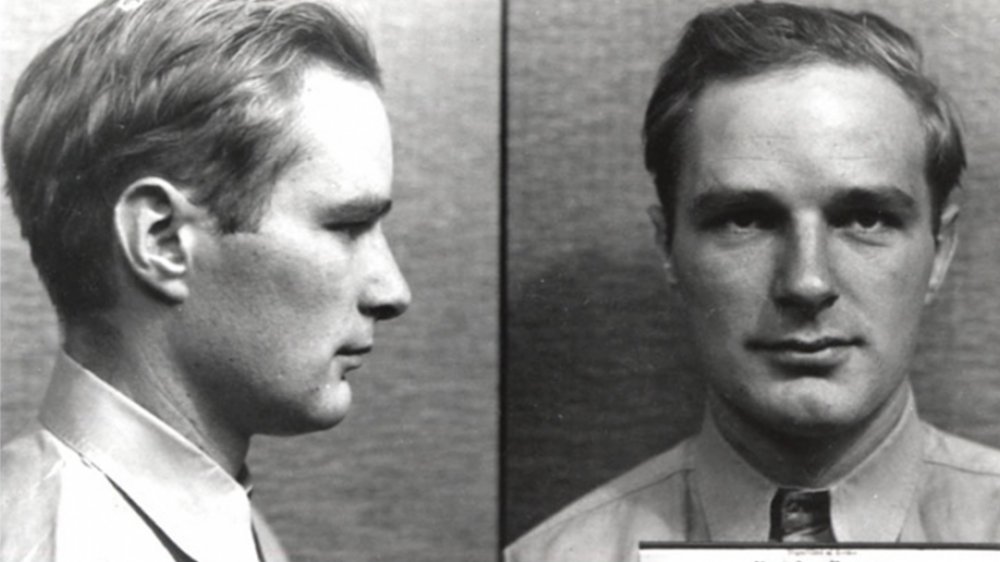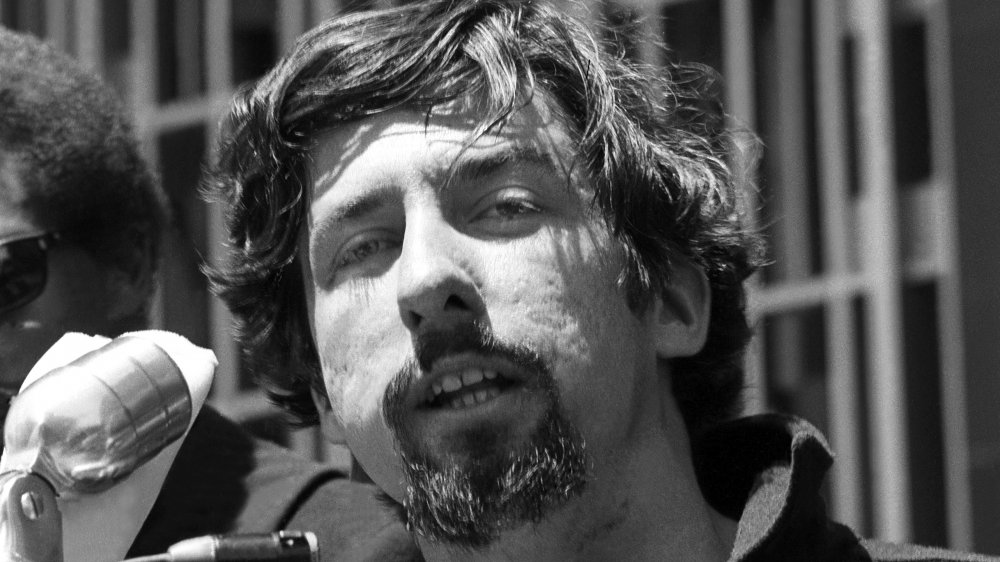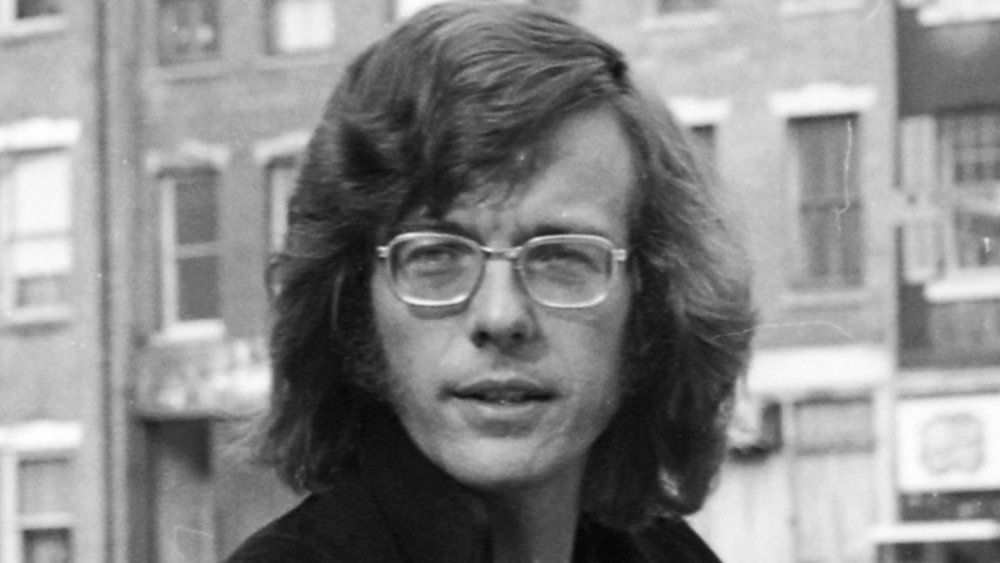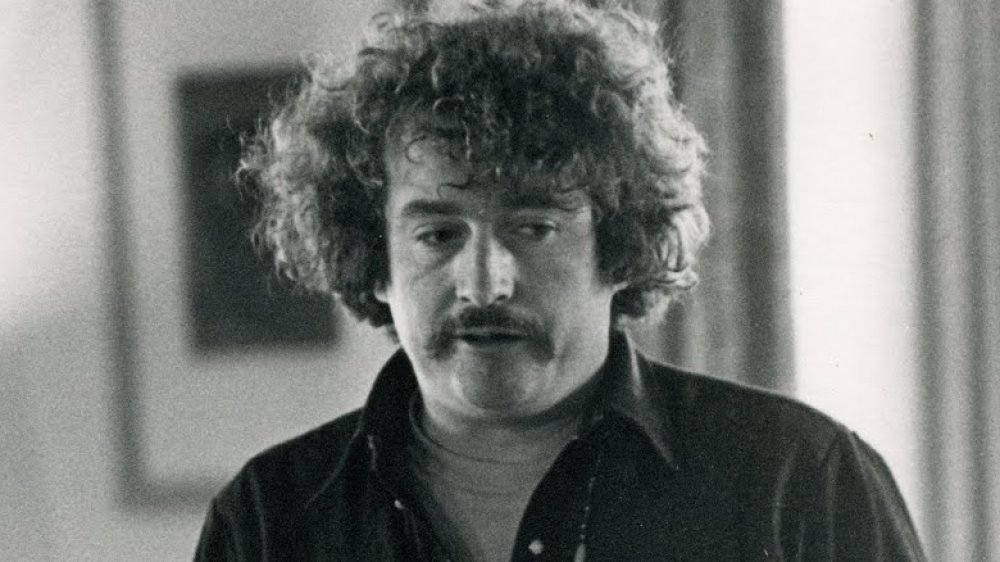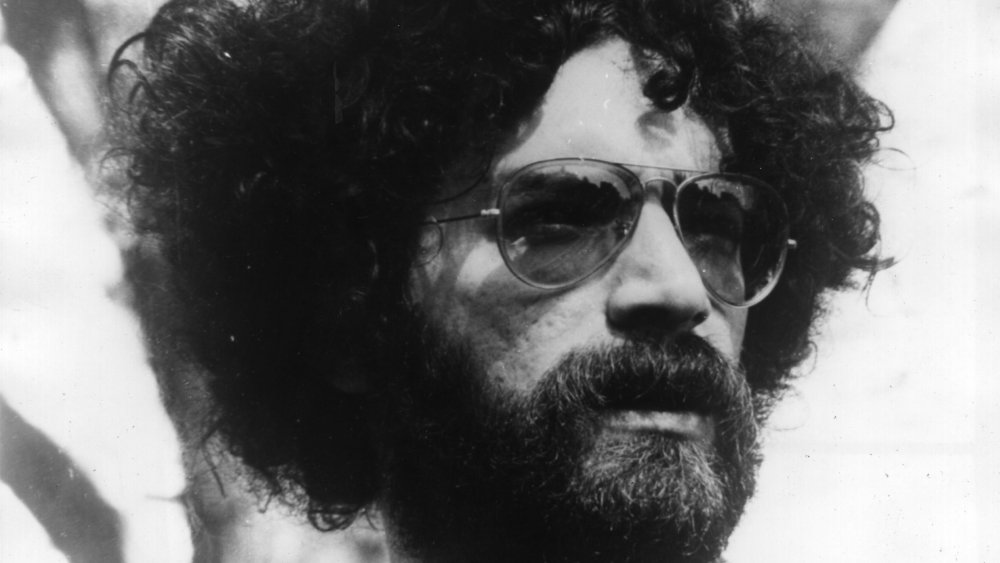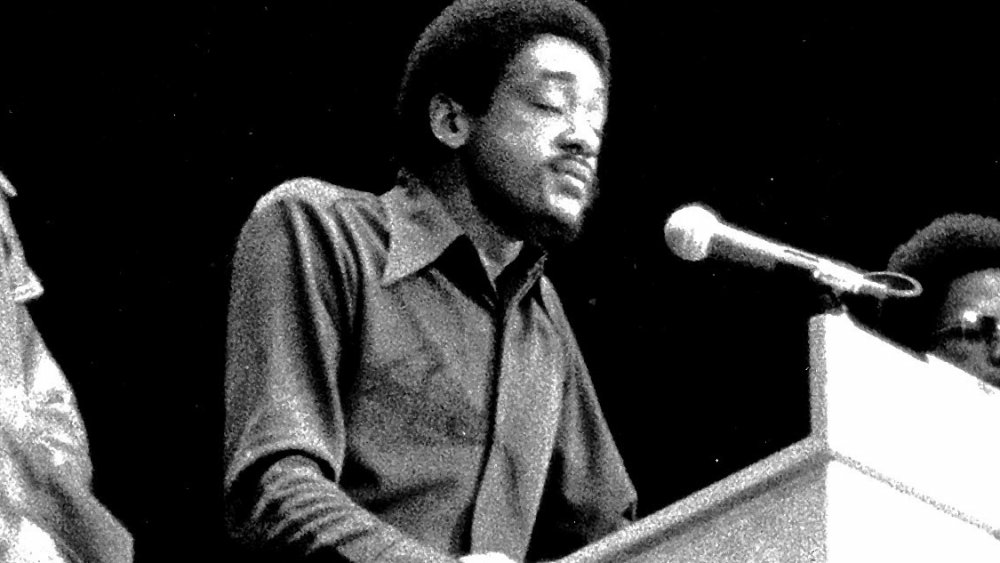Who Were The Chicago Seven?
Beginning in 1969 and lasting for more than four months, Judge Julius Hoffman presided over the trial of the "Chicago 8," later the "Chicago 7," a group of countercultural protestors that included hippie icons, dedicated activists, and political theorists all charged with starting the large-scale anti-Vietnam War demonstrations outside the Democratic National Convention in 1968 that descended into riots and police violence.
The event didn't just put a few guys on trial, it put the whole hippie generation on notice, pitting the establishment against youth culture and conservatives against liberals, a microcosm of the culture war being fought virtually everywhere else in the United States in the late 1960s. All defendants were tried at once, represented by attorneys William Kunstler and Leonard Weinglass, and refused to be reined in by the judge or the prosecution. According to the LA Times, defiance was the name of the game, with the accused frequently and loudly questioning testimony, putting their feet up on chairs, speaking out against the judge, and once, wearing judicial robes into the courtroom only to throw them off and stomp on them.
A candidate for the title of "trial of the century," the trial of the Chicago 7 has parallels to future courtroom and political battles and was dramatized by filmmaker Aaron Sorkin in 2020 as The Trial of the Chicago 7. Here's a look at the protests that led to a dramatic legal battle, as well as the real people forever immortalized as "the Chicago 7."
Abbie Hoffman was a '60s icon
Abbie Hoffman wasn't necessarily a hippie — Smithsonian says he was actually a Yippie. He co-founded the Youth International Party, a boisterous anti-war offshoot of the countercultural movement that brought theatricality to their energetic, media-attracting anti-Vietnam War (and anti-establishment) protests.
In 1967, Hoffman (and co-Yippie founder Jerry Rubin) publicly exorcised the Pentagon, headquarters of the U.S. Department of Defense. A few months later, Hoffman helped dump cash onto the trading floor of the New York Stock Exchange, inviting TV cameras to see greed in action as brokers hustled to grab as much cash as possible while at the same time halting trading, if only for a few minutes. Hoffman and Rubin decided to stage a counter-convention to protest the 1968 Democratic National Convention, which culminated with the nomination of Pigasus, a pig, as a presidential candidate.
Because of his pivotal role in the Chicago protests, Hoffman was among the "Chicago 7" rounded up and arrested months later. Hoffman attempted to make a mockery of the trial, stepping on judicial robes and referring to Judge Julius Hoffman as "Julie," for example, and he was often cited for contempt of court.
Abbie Hoffman had a wild, post-trial life
If one man represents and embodies the spirit of the 1960s countercultural, anti-war generation, it's Abbie Hoffman. Not only arrested and tried as one of the ringleaders of the Democratic National Convention protests in 1968, he also crashed Woodstock — he was kicked offstage by The Who when he showed up to protest the imprisonment of activist John Sinclair. In 1971, Hoffman published Steal This Book, the classic handbook for guerrilla, anti-capitalist, left-wing activists.
Hoffman's life took some odd turns in the mid-1970s. After getting arrested on a charge of intending to sell cocaine, NNY 360 reports he fled to Canada and Mexico and then hid out in a small New York town under the assumed name of Barry Freed and with a cosmetically altered nose. Eventually turning himself in, he was convicted and served jail time, but got in trouble with the law again in 1986 over protesting a CIA recruitment drive at a Massachusetts college campus. Hoffman died in 1989, of suicide, at age 52.
Jerry Rubin got rich
While a graduate student at UC Berkeley in the 1960s, Jerry Rubin got caught up in the anti-war movement and in the late '60s teamed up with Abbie Hoffman to form the Youth International Party, or Yippies, a progressive, countercultural group that earned attention for its causes by staging elaborate, anti-establishment publicity stunts. He was on hand for the protests outside the 1968 Democratic National Convention in Chicago, and, as a major leader of the anti-war movement, that led to his arrest, trial, and conviction as one of the "Chicago 7."
According to Esquire, hope for his politics seemed lost for Rubin following the 1972 re-election of President Richard Nixon over anti-war candidate George McGovern, and after writing Vote! with Hoffman, he ditched politics for business. By the end of the '70s, his investment made him a millionaire and in the '80s he went to work as a stockbroker for John Muir and Co.
In November 1994, Rubin was struck by a car when trying to cross a Los Angeles area street and died of a heart attack after two weeks in intensive care. He was 56.
David Dellinger was a long-established pacifist
By far the oldest of the Chicago 7 defendants — 54 when the trial began in 1969 — David Dellinger wasn't among the young generation of Baby Boomer anti-Vietnam War countercultural protestors. He actually started off firmly entrenched as a member of the more conservative establishment, the scion of a wealthy and prominent Republican lawyer, according to WGBH. He attended Yale, where he worked as a labor organizer for campus staff and in the early 1940s refused the draft that would have placed him in combat for World War II.
In the 1960s, Dellinger became one of the most prominent and active protestors, forming and leading the National Mobilization Committee to End the War in Vietnam (MOBE), which staged huge demonstrations around the United States. In 1967, Dellinger and MOBE led 150,000 people (including Abbie Hoffman and Jerry Rubin's Yippies) in the march on the Pentagon, and a year later, he attended the anti-war protests at the Democratic National Convention in Chicago.
While Dellinger's conviction in the trial of the Chicago 7 was eventually overturned, he never stopped protesting. At the 1996 Democratic National Convention — held in Chicago — he was among a group of 11 people arrested for a peaceful demonstration. Dellinger died in 2004 at age 88.
Tom Hayden went into politics
Tom Hayden was responsible for officially putting into words what the countercultural movement was all about. As a co-founder of Students for a Democratic Society, The Detroit News says he wrote the organization's 1962 manifesto, laying out their aims of civil rights for all and no more war. In addition to protesting in Chicago, he worked for racial justice in the South, registering African Americans to vote, and for his efforts endured a beating in Mississippi and was briefly jailed in Georgia. Hayden also took multiple trips to North Vietnam to protest American military involvement.
Hayden had a hand in planning the Chicago DNC protests in 1968 that turned chaotic, although he'd always intended for them to be nonviolent in nature. Like most of his co-defendants, Hayden was convicted of inciting riot, for which he earned a five-year sentence, later overturned on appeal owing to bias on the part of Judge Julius Hoffman.
After the proceedings, Hayden remained in the spotlight, in part because of who he married. After meeting A-list actress and outspoken activist Jane Fonda at a Vietnam War protest, the couple wed in 1973 and had a son together. They divorced in 1990, eight years after Hayden won a seat in the California legislature. In 1993, he began a seven-year stint in the state senate and unsuccessfully ran for governor of California and mayor of Los Angeles. He died at age 76 in 2016.
Rennie Davis got hurt in the Chicago protests
Raised on a Michigan farm, Biography says highly educated activist and community organizer Rennie Davis co-founded the campus organization Students for a Democratic Society and joined the anti-Vietnam War movement in 1965, when it was in its very early stages. By 1968, Davis had ascended to the role of national coordinator of 150 nonviolent organizations that converged in Chicago to protest American military actions in Vietnam.
Davis and company did obtain a permit for a low-key, peaceful demonstration in Chicago's Grant Park, which ended when an attendee lowered the American flag to half-staff, indicating political distress. That's when police escalated things, with Davis telling The Guardian that they "basically came in and beat people as they arrested this person." Responding with a human chain of safety and a declaration that he had a permit, Davis asked police to withdraw. They didn't. "As they approached me, I literally could hear police yelling, 'Kill Davis!' He was struck on the head and knocked down then repeatedly clubbed until he was able to crawl to safety. He went to a hospital and received 13 stitches for his injuries, all the while nurses hid him from police.
Davis, one of two defendants to testify on the stand (along with Abbie Hoffman), was among the parties found guilty of inciting a riot and for contempt of court, all of which were reversed upon appeal. The activist kept up his anti-war crusade well into the '70s, teaming up with John Lennon to stage a series of protests, thwarted after President Nixon attempted to deport the ex-Beatle. Eventually, Davis settled into a life as a corporate consultant.
John Froines was a prominent chemist
John Froines was among the most educated of the Chicago 7 defendants. At age 28, and a year before the events at the 1968 Democratic National Convention transpired, he'd earned a PhD in physical chemistry from Yale University and did some postdoctoral research in England under the tutelage of Nobel Prize winner Sir George Porter.
Froines returned to the U.S. to focus on social causes, which he first explored as a member of Yale's Students for a Democratic Society, where he met Rennie Davis, Dave Dellinger, and Tom Hayden, according to the Los Angeles Times. With that group, he headed to Chicago to organize anti-war protests outside the DNC.
While the subsequent trial was a colorful, stunt-and-outburst-filled affair, Froines actions were relatively brief, once laughing at a witness and calling their answer "stupid" and refusing an "all rise" order. Froines was acquitted of all charges of conspiracy to incite violence (and for teaching others to make stink bombs and fire bombs), while 15 citations of contempt of court were ultimately dismissed. After the trial, Froines joined the public health sector and worked as an academic chemist until his retirement in 2015.
Lee Weiner never stopped protesting
At the time the trial began in 1969, Lee Weiner was working as a teaching assistant at Northwestern University outside Chicago. He'd studied political philosophy in Jerusalem and earned a master's in social work from Loyola University. As a welfare caseworker, he witnessed "gut-wrenching" poverty on Chicago's South Side. "Every day, the work I did drove punishing truths into my head about what was wrong in America," Weiner wrote in his memoir Conspiracy to Riot (via Chicago Magazine). Those progressive fuels helped power his anti-war beliefs, and he teamed up with college friend Jerry Rubin in staging protests outside the 1968 Democratic National Convention.
Weiner officially faced charges of conspiracy to riot and, along with Froines, for instructing other protestors on how to make riot-ready incendiary devices, such as Molotov cocktails and stink bombs. During the trial itself, Weiner took a different tack to protesting the trial than did his louder, more abrasive cohorts. He apparently felt that his conviction was such a foregone conclusion that he rarely attended group meetings with defense attorneys and during court he quietly hung out reading sci-fi novels and philosophy texts. Much to his surprise, Weiner was acquitted of the crimes for which he was charged, due to a lack of evidence and credible testimony.
In the years after the trial, Weiner worked for the Anti-Defamation League of B'Nai B'rith and advocated for more funding for AIDS research.
Bobby Seale made it the Chicago 8
Originally the Chicago 7 was the Chicago 8, with activist and Black Panther Party co-founder Bobby Seale as an additional defendant, according to Smithsonian. Unlike the rest of the Chicago 8, Seale didn't organize the anti-Vietnam War protests at the 1968 Democratic National Convention. He'd arrived in Chicago to help out the protest movement as a last-minute, fill-in speaker. He spoke up in court against Judge Julius Hoffman so often and pointedly, calling the jurist a "racist pig" and loudly decrying what he considered wrongful accusations — for which contempt of court citations were proffered — that authorities gagged him and chained him to his chair.
While not tightly tied to the rest of the defendants, Seale was head of the Chicago branch of the Black Panthers, a sometimes militant pro-African American-advocacy group feared and villainized by law enforcement, so he was made an example and lumped in with the Chicago 8, only to legally severed and tried separately.
As a result of the Chicago trial, Seale received a four year sentence for contempt of court, and immediately after faced charges in an ultimately dismissed case of the kidnapping and murder of a Black Panther (turned suspected informant) named Alex Rackley. In 1972, the contempt charges were suspended and Seale was released from prison. He got back into politics almost immediately, albeit in a different way, running for mayor of Oakland in 1973 and coming in second. By the end of the '70s, Seale had settled into a life as an elder statesman of protecting and social crusading, writing books and frequently speaking on college campuses.
